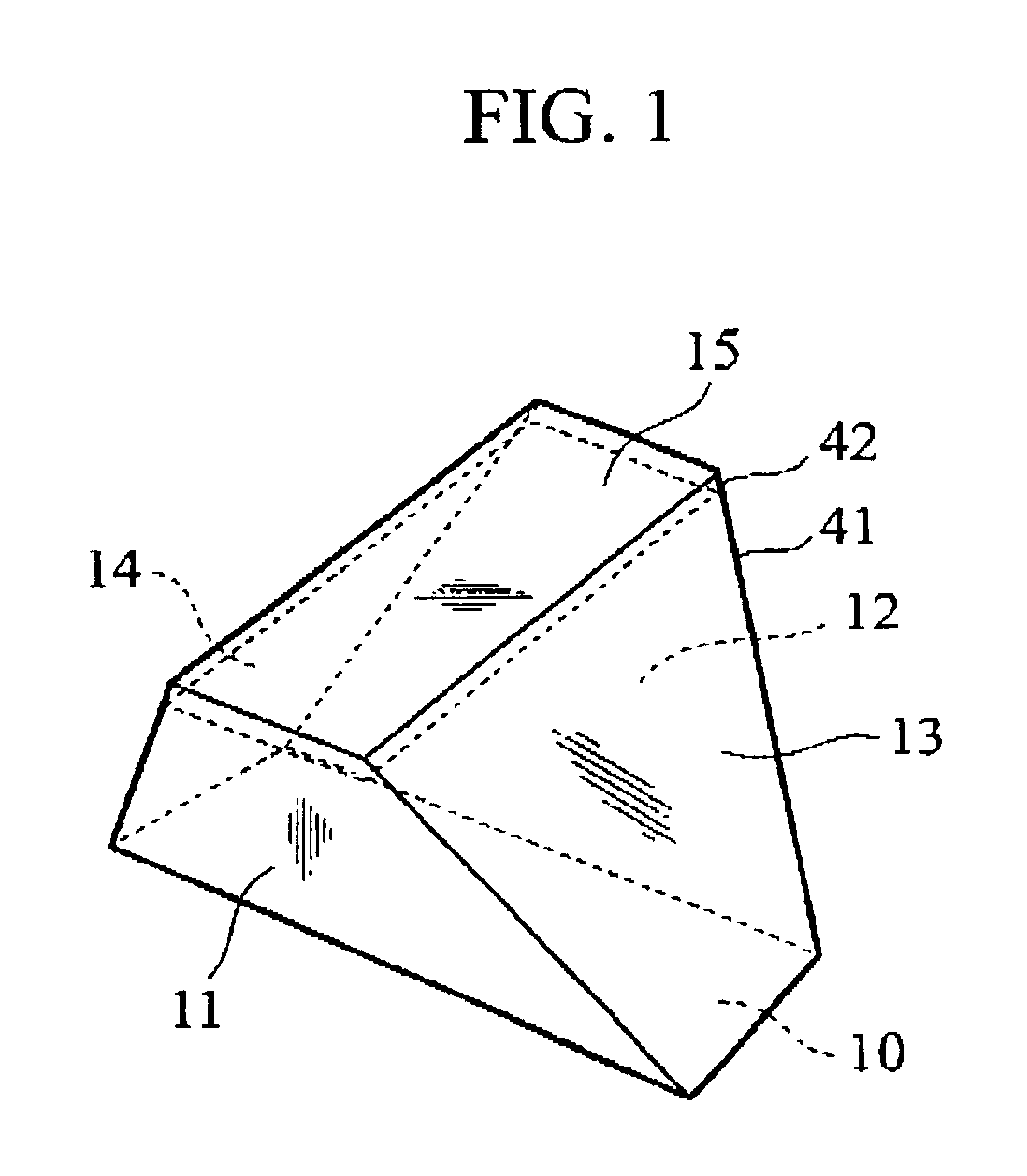Light emitting element and manufacturing method for the same
a technology of light-emitting elements and manufacturing methods, which is applied in the direction of semiconductor/solid-state device manufacturing, electrical equipment, semiconductor devices, etc., can solve the problems of difficult to form such a layer having the continuously changing refractive index on the surface of led, poor extraction efficiency of led chips encapsulated with epoxy resin, and difficult to say that an inherent property
- Summary
- Abstract
- Description
- Claims
- Application Information
AI Technical Summary
Benefits of technology
Problems solved by technology
Method used
Image
Examples
first embodiment
[0031]A light emitting element chip (LED chip) according to a first embodiment of the present invention, as shown in FIG. 1 as an oblique perspective view, FIGS. 2A and 2B as side views, and FIG. 2C as a top view, has a hexahedron shape. The LED chip is fabricated, for example, from an LED wafer (semiconductor substrate) with a thickness of about 150 μm, by using GaP for a base substrate 41 and InGaAlP for a light emitting layer 42. The hexahedral LED chip includes a rectangular top surface (first principal surface) 15 having, e.g. a long edge of 300 μm and a short edge of 160 μm, a rectangular bottom surface (second principal surface) 10 having, e.g. a long edge of 300 μm and a short edge of 160 μm, and first through fourth side surfaces 11, 12, 13, and 14. The long edges of the top and bottom surfaces are arranged orthogonal to each other. In addition, the first and second side surfaces 11 and 12 facing to each other are formed by trapezoids having the same shape and dimensions an...
second embodiment
[0073]An LED chip 148 according to a second embodiment of the present invention, as shown in FIG. 11, has InGaAlP epitaxial layers including a light emitting layer disposed on a GaP substrate as a base substrate. The base substrate includes the GaP substrate 108 having a p-type conductivity and a p-type GaP layer 107 disposed on the GaP substrate 108. The InGaAlP epitaxial layers includes an n-type current diffusion layer 102, an n-type clad layer 103, an active layer 104, a p-type clad layer 105, and a bonding layer 106. A light emitting layer is the active layer 104 sandwiched between the n-type clad layer 103 and the p-type clad layer 105. The bonding layer 106 of the epitaxial layer is disposed directly on the p-type GaP layer 107 of the base substrate. First and second electrodes 109 and 110 of the LED chip 148 are provided on a bottom surface of the GaP substrate 108 and a top surface of the n-type current diffusion layer 102. The base substrate has rough surface 111 on side s...
PUM
 Login to View More
Login to View More Abstract
Description
Claims
Application Information
 Login to View More
Login to View More - R&D
- Intellectual Property
- Life Sciences
- Materials
- Tech Scout
- Unparalleled Data Quality
- Higher Quality Content
- 60% Fewer Hallucinations
Browse by: Latest US Patents, China's latest patents, Technical Efficacy Thesaurus, Application Domain, Technology Topic, Popular Technical Reports.
© 2025 PatSnap. All rights reserved.Legal|Privacy policy|Modern Slavery Act Transparency Statement|Sitemap|About US| Contact US: help@patsnap.com



